Using nails is an effective way of fixing or joining pieces of softwood timber and other similar materials together. Hardwoods can be difficult to join with nails as they tend to bend under the impact of the hammer due to the density of the timber.
Below is a range of nails that can be used depending on the type of wood and the nature of the work to be attempted.
What are Nails?
This may sound like a pretty silly question to ask as most people, regardless of whether you are involved in construction or any form of DIY, most people will have encountered a nail at some point in their lives but there are some that haven’t.
For the uninitiated, traditionally, nails were the “go to” solution for fixing a range of materials together, hanging objects on walls and trees etc. and they date all the way back to Egyptian times, over 3000 years.
In terms of how they work, once hammered into a surface friction takes over and holds the nail within the material. This process is made even more effective if a given nail features barbs, grooves, a twisted shank or shaft as it’s known (the main body pf the nail) as this dramatically increases grip.
Over the years their design hasn’t changed a great deal but many different types of nail have been developed for specific jobs where standard nails don’t quite cut the mustard.
Sticking with tradition, nails were typically hammered in to a surface using a standard hand held hammer. The user would life the hammer and strike the head of the hammer on the head of the nail driving it down into the surface of the object you are working on. For more information on hand held hammers see our project here.
Today the hand held hammer has been somewhat done away with by the more modern nail gun. These come in electric corded or cordless and also compressor fed (pneumatic) or gas canister powered versions. Most common types of nails such as round wire, staples etc. can be used with nail guns.
Due to the time it takes to knock a nail in with a hammer, the nail gun has been a revolutions for tradesmen, allowing them to work much more quickly and efficiently.
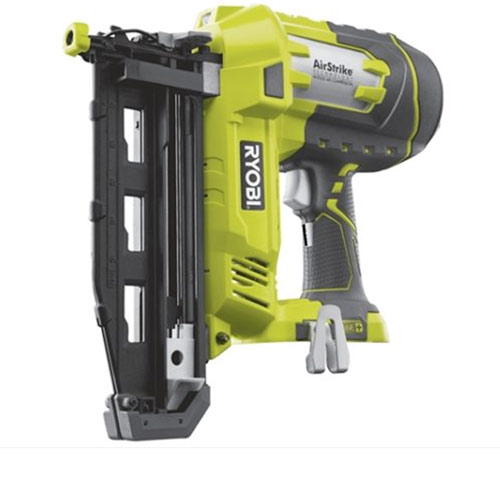
Standard cordless electric compressed air nail gun by Ryobi
When it comes to nailing you have to select the correct nail for the job as not all nails are suitable for all jobs. Additionally you have to take note of the timber you are using. Today’s modern timber is much weaker than older timber and using the wrong nail will just split the timber and ruin it.
This is also the case if you use an incorrect sized nail, too long or too wide and then can easily cause splits and shakes and totally spoil a finish.
What are the Different Parts of a Nail?
There is essentially 3 parts to a nail; the head, the shaft ro shank and the point. The head is used to hit the nail into the material to are working with the, the shaft/shank forms the body of the nail and the point is at the end and allows the nail to be driven into the given material more easily.
- The Head: Nail heads are either large and round ensuring good contact with a hammer or small and thin, often the same size as the shank and this allows them to be knocked below the surface and filled and hidden
- Shaft or Shank: Generally most nail shanks are smooth and allow them to travel easily through most materials, however they can also be splined, ribbed or spiralled and these features grip into a timber surface holding the nail firmly in once knocked down
- The Point: as this suggests the opposing end of the nail from the head is cut to a fine, sharp point which allows it to penetrate the material you’re working with. Generally longer points reduce the risk of timber splitting whereas shorter blunter points can occationally cause splitting
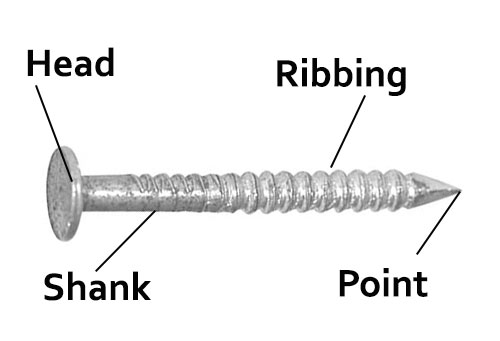
The different parts of a nail
What are Nails Made From?
Nails are mostly made of steel but as we all know steel is susceptible to moisture and will rust over time, so where nails are to be used outside or indeed with pressure-treated timber (as the treatmnet causes corrosion) they need to be treated with a protective coating.
Here are the most common materials and finishes used for nails:
- Bright Nails: These are the most common type of nail the name bright referrs to untreated steel and due to this should only ever be used indoors
- Zinc-Plated Nails: Nails that are coated with a zinc coating are resistant to corrosion and look silver, sometimes gold in appearance, however the coatings are generally quite thin so don’t stand up to much
- Galvanized Nails: These types of nails feature a much thicker coating of zinc that the above type and due to this can be used outdoors and with timber that’s been pressure treated
- Black Phosphate Nails: These types of nail are normally dark grey or black in appearance and are mainly used for fixing plasterboard. The phosphate coating helps protect the nail and prevent it rusting and also helps plaster and paint to bond to it
- Brass, Bronze and Nickel: These types of nail are generally used in indoor applications, normally for fixing upholstery to furniture and the similar
- Copper: As copper copes extremely well with water and moisture and does not degrade, copper nails and tacks are mostly used for roofing applications
What are the Different Types of Nails?
There are many, many different types of nail available today, some for general use with timber and some only to be used for specific jobs. Here follows a list of some of the most common types of nail available today.
Round Wire Nail
This is used for general fixing work and due to this is the most commonly used type of nail today. It is not attractive in shape or when hammered into a piece of timber but they are strong and provide a decent fixing.
One substantial downside of these nails is that they can split wood when hammered in position, especially if the wood is of low quality.
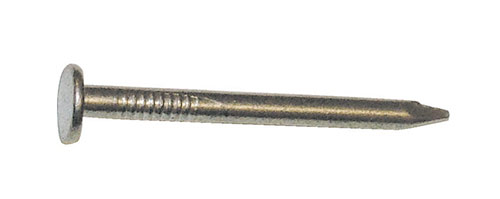
Round Wire Nail
Brads or Nail Gun Nails
These are generally used in nail guns and are fired into a given piece of timber using compressed air. They come on a strip that allows then to be loaded into a nail gun.
Generally they come in two different types, first fix and second fix, to accommodate the different types of nail gun, and once fired in by the gun, their heads sit below surface level for a smooth finish.
They are used extensively used across all areas of construction, with first fix being larger and more course for heavier job, and second fix being finer for more delicate work.
On the whole they are comparable to the round wire nail.
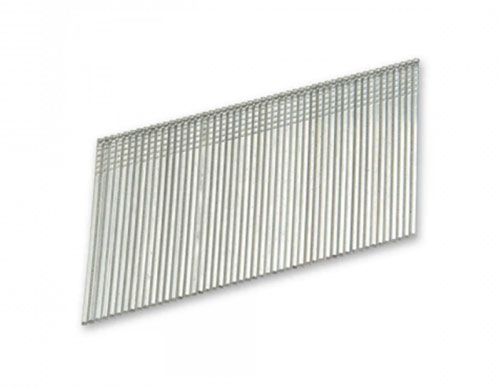
Brads
Turbo Zip Nails
Hammer in fixings which hold like a screw. Once inserted, the barbs that feature on the sides of the fixing bite in to the surrounding material holding it firmly in place.
These fixings can be used both internally and externally for any types of timber and provide a good and solid fixing that is difficult to force apart.
These fixings can also be used for fixing timber to masonry, but you have to drill a pilot hole first.
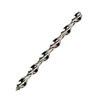
Turbo zip nails
Cut or Clasp Nail
These types of nails are used for generally fixing timber to soft masonry. Due to their “wedge” shape they provide an excellent strong fixing and are hard to remove once hammered in.
Cut nails are quite large in size so aren’t too suited to delicate applications, but there is a finer version available called a floor brad that is designed for floor boards down.
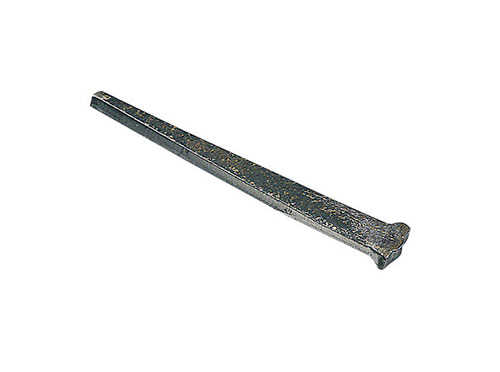
Cut or clasp nail
Oval Wire Nail
Used extensively across many areas of carpentry for fixing a variety of objects and surfaces, these nails are typically quite long nail and care must be taken when it is hammered into the wood as that can easily bend.
Due to their rather thin nature they are unlikely to split the wood when hammered in (unlike round wire nails) and once knocked down their smaller oval heads can be knocked below the surface for a clean finish.
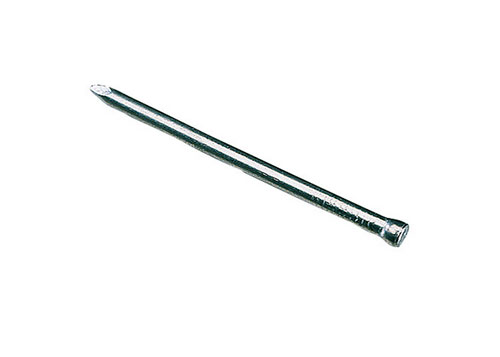
Oval wire nail
Masonry Nails
These types of nail provide a decent fixing for joining timber and other similar objects to masonry, although they are a fairly lightweight fixing so for heavy objects bolts or screws should be used.
Normally made of hardened zinc they can be easily hammered into standard concrete and similar masonry and their zinc makeup ensures they don’t rust.
A good example of their use is when fixing carpet strips to a solid concrete floor.
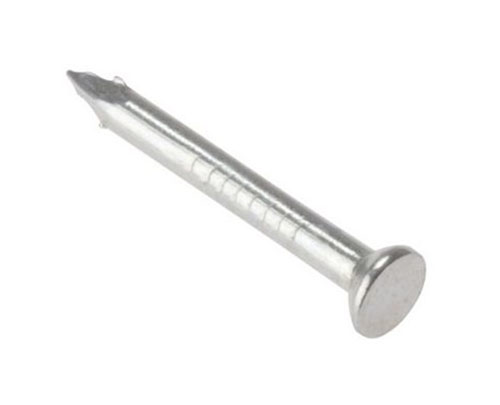
Masonry nails
lost Head Nail
This type of nail is ideal if it is necessary to hide the head of the nail once it has been knocked in. A punch can be used to knock the head further in if needed where it can be filled over to be totally hidden.
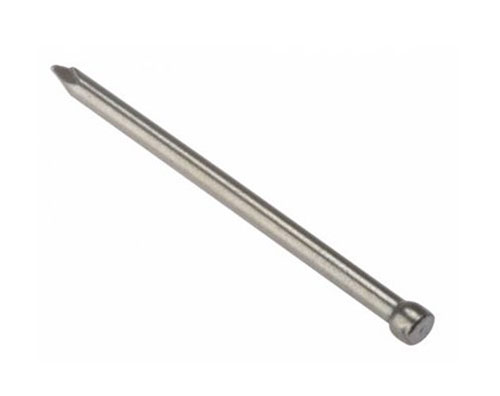
lost head nail
Galvanized Felt Nails
This nail is generally used for fixing roofing felt to sheds, outbuildings and other external structures. It features a large head that not only makes it easy to strike but once it’s been knocked in the large flat head helps to seal the hole and prevent water ingress.
In pretty much all cases felt nails are galvanized so that they don’t rust. They are also sometimes known as “clout” nails.
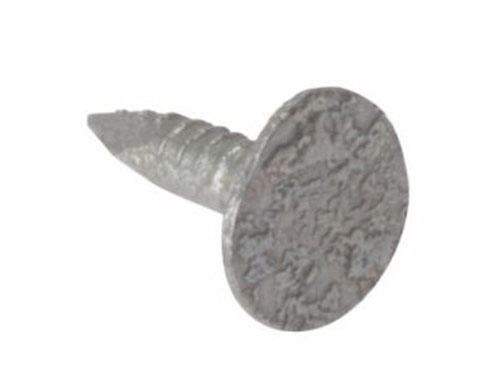
Galvanised felt nails
Panel Pin
These types of nail are generally quite small and thin and used for fairly delicate and light jobs. Once very common use is for fixing the rear panels on to flat pack furniture such as drawers and wardrobes, but for added strength glue should also be used.
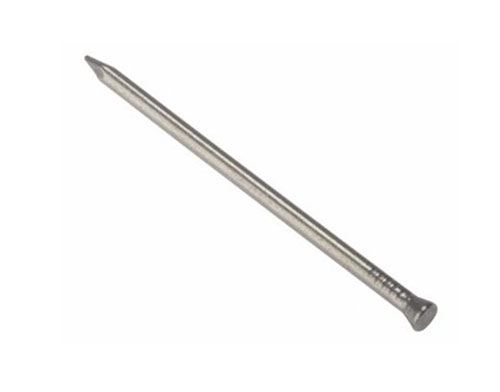
Panel pin
Copper Disc Rivet or Tingle
Although they don’t look much like a nail, disc rivets are very similar to felt nails but in this case are used to fix roofing slates to a surface, particularly at the base of tiles. Most commonly used for cement fibre slates.
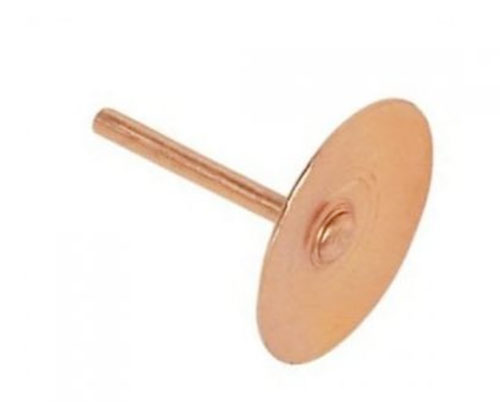
Copper disc rivet or tingle
Tack (upholstery tack)
These are similar in a way to cut or clasp nails in that they are angular in shape, but this time they feature a flat head. In most instances they are used for fixing textile materials to wood for example, fixing upholstery to furniture.
One thing to be aware of is they are quite small and very sharp so make sure you don’t drop any!
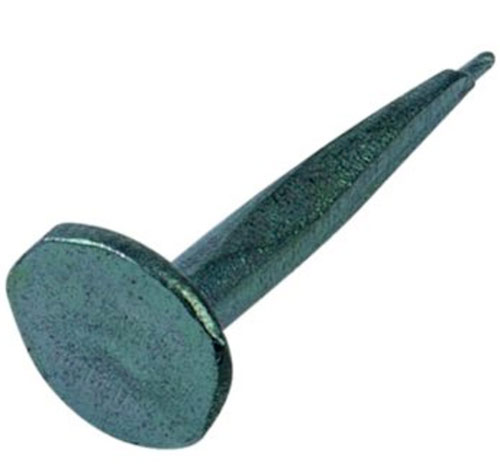
Tack
Square Twist Nail
Sheradised (zinc coated by heating), these nails do in fact feature a square shaft or shank as it’s known that is then twisted when hot and then cut to a point. In terms of use, they are normally used for external cladding and/or felting applications.
Their twisted shaft acts a bit like a screw. As it’s hammered in it twists creating a stronger hold than a standard straight shaft nail.
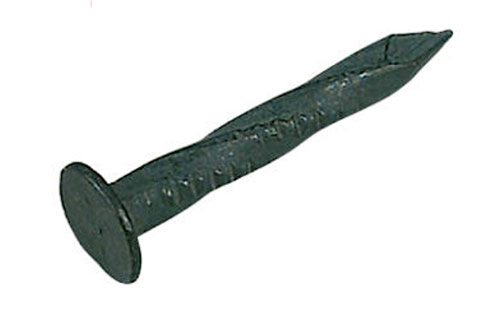
Square twist nail
Stainless Steel Slate Hooks
These handy hooks are used for keeping the bottom of slipped slates in place when replacing them. The bent end is hammer into the roof and then the slate is slipped into the hook end to hold it in place.
As they are made from stainless steel this prevents them from rusting away when exposed to the elements.
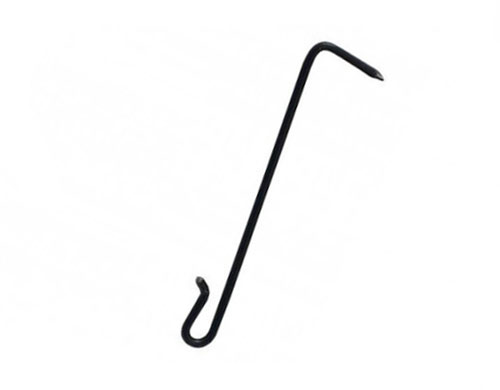
Stainless steel slate hooks
Sprig
Again very similar in looks cut or clasp nails in that they are angular in shape, they don’t feature a head as they are primarily used for holding panes of glass in windows before window putty is applied.
Again they are quite small in size and very sharp so don’t misplace any.
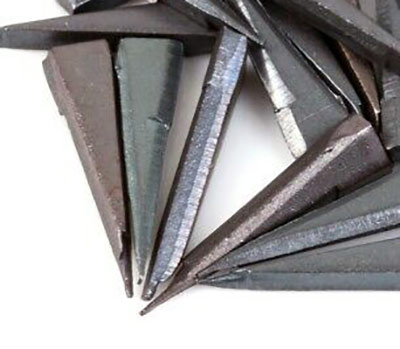
Sprig
Cone Head Drive Nail With Spat Washer or Spring Head Nail
As you can see, the shaft of this nail is twisted and when knocked in acts as a screw producing more grip and hold.
Generally used in roofing and used for holding down roofing sheets on a roof they are used in conjunction with “spat” washers that keep fixing holes watertight by preventing water ingress.
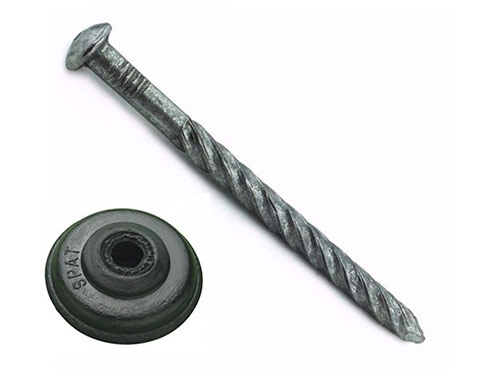
Cone head drive screw with washer
Annular Nail
The shaft of this type of nail is ribbed and the teeth or barbs help to hold it in place firmly. As it provides a much more solid fixing than a standard nail it is used for fixing plywood and other materials, mostly on floors to stop movement in joists and help prevent creaking.
As they grip much more firmly than a standard nail they are also much trickier to remove!
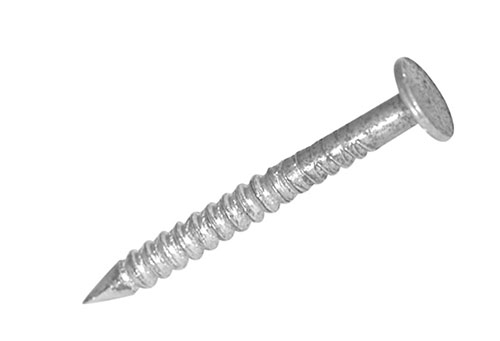
Annular nail
Plasterboard Nails
As the name suggests these nails are used for fixing plasterboard to surfaces, mainly timber studwork and joists. They are only really used as a cheap alternative to plasterboard screws but they are no where near as good or provide as good a fixing.
They are made of galvanized steel to prevent rusting when fixing in place.

Plasterboard nails
Hardboard Pin
As you would expect from the name, this nail is mainly used for fixing hardboard in place. Once knocked in the diamond shaped head is hidden so is ideal when a smooth finish is needed.
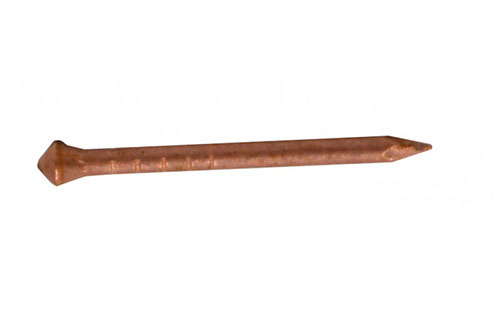
Hardboard pin
Staples
Staples or fencing staples as they are also known come in both zinc and galvanized construction as they are mainly used externally for fixing wire and chainlink fencing to fence posts.
They can be hammered in with a standard hand held hammer or using a fencing stapler (like a nail gun but for staples).
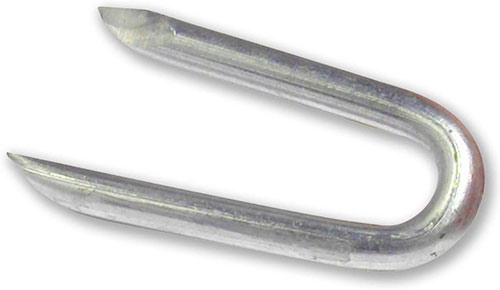
Staple
Corrugated Fastener
Can be hammered in using a hand held hammer or can also be used with a nail gun, the corrugated fastener is mainly used for reinforcing wooden frames and joints, particularly mitre joints as it provides additional strength and rigidity to the joint.
They are used with the corrugations facing downward with the bottom edge being sharp they are hammered down across the joint. As this isn’t a particularly attractive finish tis is mainly used with rougher carpentry.
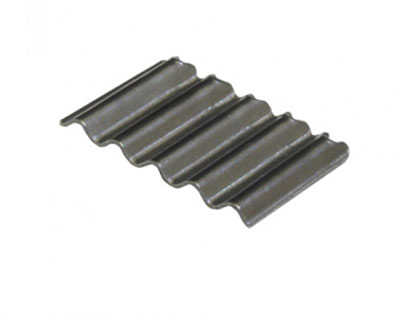
Corrugated fastener
Upholstery Pin
Normally finished in bronze or brass with a 10mm diameter head, they are available in a range of decorative finishes. They’re main use is for pinning upholstery and fabric to timber such as when making chairs and other similar objects.
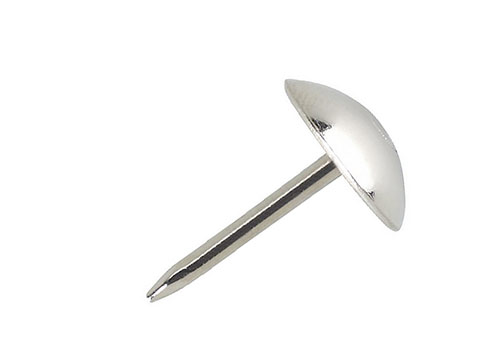
Upholstery pin
Copper Clout Nail
In terms of appearance they look like a cross between a felt nail and round wire nail, these nails are primarily used for fixing roofing slates in place. As they are made of copper they don’t rust or corrode.
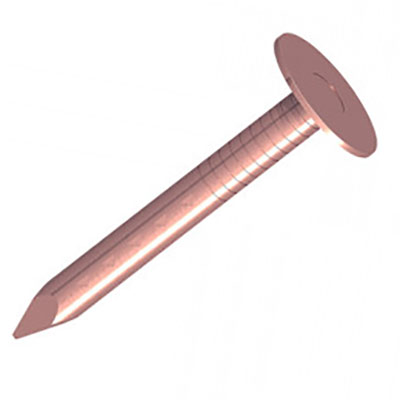
Copper clout nail
Plastic Headed Nail
The plastic headed nail is mainly used in conjunction with UPVC cladding and UPVC facia boards and are generally used for fixing said objects in place.
The plastic heads are available in white, brown and black to suite the various different colours of UPVC available. The coloured heads help to hide the fixing and make it look less obvious.
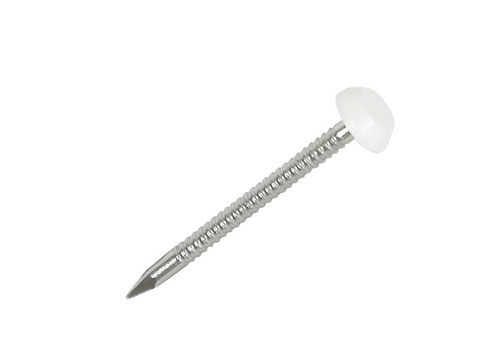
Plastic headed nail
Spring Head Nail
The main use for this type of nail is for fixing sheet materials down to a structure. A good example of this is fixing corrugated plastic, steel or cement fibre roofing sheets down.
As with cone head drive nails the shaft is twisted as once knocked in it acts like a screw holding the object much more firmly than a standard straight shaft nail.
The large domed head helps to keep hole waterproof and they can be used along with spat washers for further water proofing. It also helps to spread the load of the downward pressure
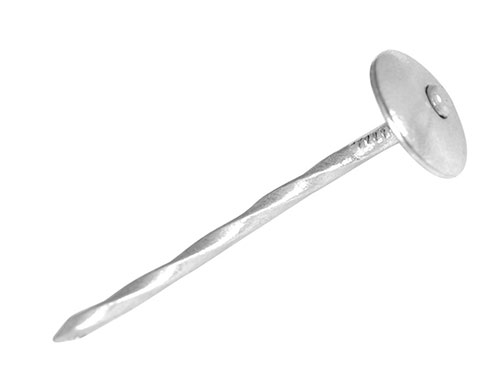
Spring head nail
Today there is a huge range of different nails available to cover the huge range of jobs they can be used for, so ensure you use the correct type of nail for the job you are doing.

